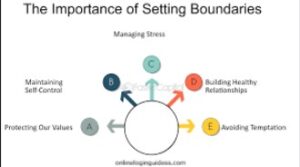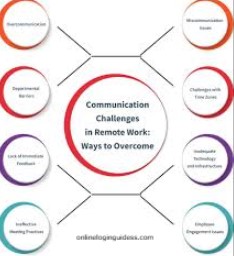Mastering Work‑Life Balance at Home: Top Tips for Remote Workers
Introduction In an age where remote work is becoming the norm, the struggle to balance professional duties with personal

Introduction
In an age where remote work is becoming the norm, the struggle to balance professional duties with personal life has never been more relevant. The keywords “work‑life balance tips for remote workers” have become essential guidelines for anyone working from home. This 2,500‑word article offers a fresh, unique take (“mojay uniqe artikal”) on mastering productivity, well‑being, fulfillment, and rest while working remotely.
1. Understanding Work‑Life Balance in Remote Settings
Work‑life balance isn’t a static concept—especially remotely. It’s about structuring days to ensure that work doesn’t intrude on personal life, and vice versa. Remote workers often blur boundaries: waking to check email before breakfast, continuing tasks past dinner, or replying during weekends. These blur the lines and increase burnout risk.
Key challenges include:
-
Home‑office overlap: home becomes office; office blurs into home.
-
Longer hours: no commute doesn’t always equate to shorter days.
-
Distractions: family, chores, pets, and personal errands compete.
-
Available 24/7 perception: coworkers assume you’re always online.
To combat these, intentional structure is vital—from physical workspace to daily routine. Let’s dive into practical strategies that improve remote workers’ well‑being, productivity, and satisfaction.
2. Craft a Dedicated Workspace

a. Separate Space, Separate Mindset
Designate a specific spot as your office—whatever fits your home: spare room, corner, or even a closet. This boundary helps shift your mental mode into “work” when you’re there, and into “off” when you leave.
b. Ergonomics Matter
Invest in a comfortable chair, monitor stand, keyboard at elbow level—reduce neck, back, and wrist strain. Your future self will thank you.
c. Clear Visibility
Keep your workspace tidy and clutter‑free. Use organizers, minimal décor, proper lighting. A clean desk cultivates a focused mindset.
d. Visual Cues
To signal transitions: close your laptop lid, open a window, turn off a desk lamp. These gestures help your brain switch contexts.
3. Establish Your Routine & Boundaries

a. Start with Set Hours
Treat work like office hours. Decide your start and finish times and commit. For example: 9 AM–5 PM or 10 AM–6 PM. Communicate these to colleagues and family. Stick to them.
b. Schedule Breaks
Take micro‑breaks every hour—stand, stretch, hydrate. A 5‑minute pause maintains focus and reduces fatigue. Try the Pomodoro technique: 25 minutes focus, 5 minutes break.
c. Morning Ritual
Begin with a consistent ritual: coffee, shower, quick walk, journaling. These signal the brain that workday is beginning—without physically commuting.
d. Transition Ritual
End with a symbolic gesture: close your laptop, take a walk, do a short meditation, or review tomorrow’s tasks. This psychologically separates work time from personal time.
e. Set Clear Boundaries
Share with housemates or family your working hours. Use signage or noise‑cancelling headphones. When you’re working, request minimal interruptions. Likewise, during off hours, respond only if urgent.
4. Prioritize Tasks Effectively
a. Use Productivity Frameworks
Apply systems like Eisenhower Matrix:
-
Important & urgent: do now
-
Important but not urgent: schedule
-
Urgent but not important: delegate if possible
-
Neither urgent nor important: eliminate
b. Plan Workloads
Every evening (or morning), outline a realistic top‑3 to‑do list. This prevents overwhelm and keeps goals manageable.
c. Time‑block Your Calendar
Group similar tasks. For example, batch email replies in one slot, meetings in another, deep‑work in the morning. This minimizes context switching.
d. Learn to Say “No”
Remote work can bring back‑to‑back tasks or extra calls. Politely decline or request rescheduling when your plate is full. Respecting your bandwidth enhances long‑term productivity.
5. Tools That Support Balance

a. Communication Controls
Mute notifications outside working hours. Use “Do Not Disturb” mode on Slack, Teams, email. You decide when to engage, not the ping.
b. Focus Tools
Apps like Forest, StayFocusd, or Cold Turkey block distracting sites. Use a timer app to enforce Pomodoro or maintain focused sessions.
c. Scheduling Tools
Tools like Calendly help set firm availability and prevent back‑to‑back zoom meetings. They also automate meeting times.
d. Task Managers
Use apps like Trello, Asana, Todoist, or Notion to keep tasks visible. Review daily progress to feel control over the workload.
e. Well‑being Apps
Meditation or mindfulness apps (e.g., Headspace, Calm) help with stress and reset during breaks.
6. Foster Mental Well‑Being
a. Move Daily
Exercise—even light activity—boosts mood and energy. Do body‑weight stretches, mini workouts, or simple walks. A lunchtime walk helps reboot focus.
b. Social Interaction
Remote work can feel isolating. Schedule coffee chats, virtual coffee breaks, or coworking sessions. Join interest groups, Slack communities, or online coworking rooms.
c. Mindfulness Breaks
Short breathing or stretching exercises throughout the day help alleviate stress. Pause mid‑day to close your eyes for a minute and center yourself.
d. Limit Screen Time Post‑Work
Evening time should include low‑screen activities—reading, cooking, hobbies, conversation, or nature. This supports mental recovery and sleep quality.
e. Sleep Hygiene
Maintain consistent sleep and wake times—even on weekends. Aim for 7–9 hours. Avoid screens an hour before bed. A “power‑down” routine helps you unwind.
7. Balance Family & Households Demands

a. Set Clear Signals
Use visual cues—open/closed door, headphones, “on duty” signage—to communicate when you’re not to be interrupted.
b. Share the Load
Household tasks don’t go away just because you’re home. Communicate responsibilities and share chores fairly with cohabitants.
c. Combine Quality Overlap
If working parents: allocate a “family hour” right after work—play, talk, share. This intentional time helps reclaim personal life.
d. Arrange Backup Support
If possible, arrange scheduled childcare, pet care, or another household adult who can step in when focus time is needed.
e. Book Family Time
Block it in your calendar—weekly family dinners, date nights, walks. Treat personal life with the same importance as professional meetings.
8. Recognize Burnout & Avoid It
a. Know the Signs
Frequent fatigue, cynicism toward work, reduced performance, irritability, poor sleep, detachment. Don’t dismiss them as “just being busy.”
b. Proactively Pause
When overwhelmed or stressed, step back. Use vacation days, mental health days, or half‑days. Discuss with your manager if workload is unsustainable.
c. Keep Work within Hours
Avoid weekend tasks if possible. Politely refuse messages or emails that fall outside work times unless critical.
d. Seek Support
Utilize Employee Assistance Programs (EAP), remote‑worker forums, or peer groups. Share your experience and learn coping strategies.
e. Reflect Often
Monthly, reassess your balance. Are you working too many hours? Losing enjoyment? Use that insight to shift habits and reset boundaries.
9. Build Long-Term Healthy Habits
a. Habit Stacking
Attach new good habits to existing routines. For example: after morning shower → journal; after work → 10‑minute walk.
b. Reward Yourself
Finish a big task? Take a break, grab a treat, or call a friend. Positive reinforcement builds motivation and satisfaction.
c. Create Personal Goals
Define goals beyond work: fitness targets, creative pursuits, reading, family time. Schedule them as you do meetings.
d. Continuous Learning
Invest in upskilling within limits. A short course or book can help you feel growth—without burning out. Balance that learning with rest.
e. Annual Reflection
Plan an annual review of your work‑life balance: what worked, what didn’t, which boundaries need updating, what new routines to adopt.
10. Remote Work Culture & Communication

a. Clear Expectations
Agree with your manager on availability, deliverables, response times. Misaligned assumptions create stress.
b. Communicate Overlap
Share your day’s plans—or “heads‑up” if off early. Being transparent helps colleagues manage expectations and respect your downtime.
c. Use Team Norms
Agree on communication norms for email timing, meeting scheduling, response windows. Teams with clear norms experience fewer interruptions and misunderstandings.
d. Asynchronous Collaboration
When possible, rely on async methods: written updates, recorded messages, task comments rather than live calls. This allows flexibility and less back‑and‑forth pressure.
e. Respect Others’ Boundaries
Offer respect by not sending after‑hours messages unless urgent. Be mindful of coworkers’ time zones and preferred hours.
Conclusion
Balancing work and personal life as a remote worker isn’t just desirable—it’s essential for sustainable peace, productivity, and well‑being. This article outlines—from crafting a dedicated workspace and routines, prioritizing tasks, using productivity tools, nurturing physical and mental health, managing household demands, to cultivating supportive remote culture—multiple practical and actionable “work‑life balance tips for remote workers.”
By designing boundaries, sticking to structure, and honoring both professional and personal commitments, remote work becomes a source of freedom—not fatigue. With small consistent habits, a supportive environment, and mindful reflection, remote professionals can thrive without sacrifice. Remember: your time, focus, and rest are equally important as your results.
Now go ahead, experiment with these tips, adapt them to your needs, and shape a remote work life that supports—not consumes—you.









